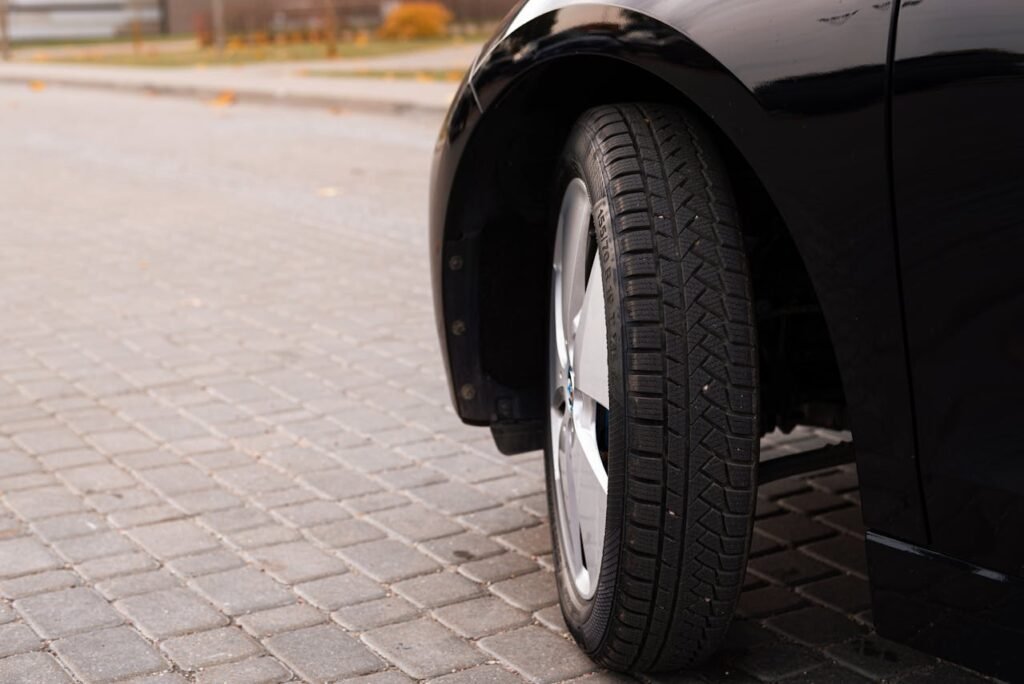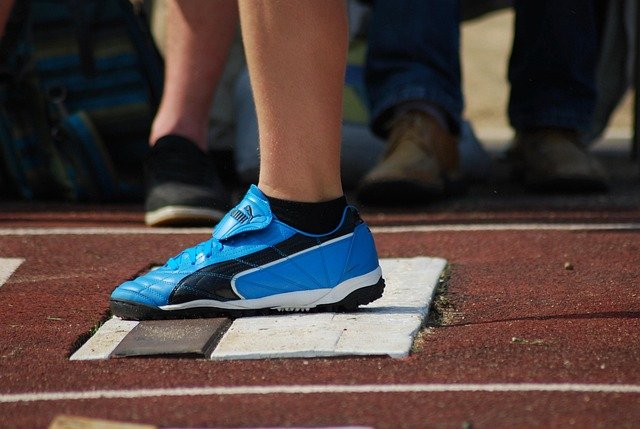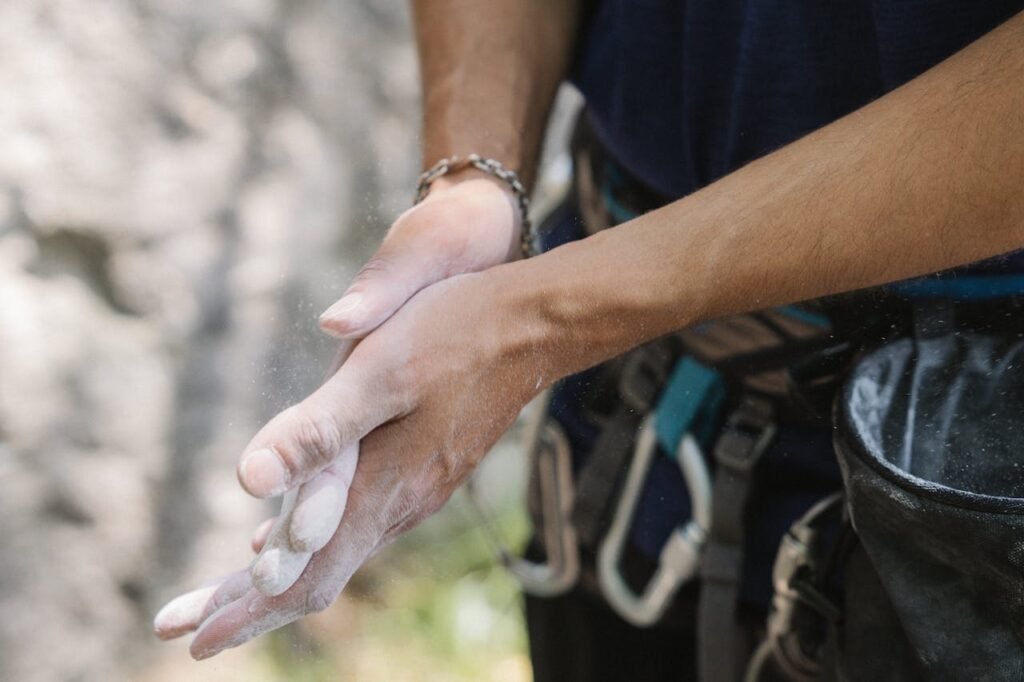Have you ever tried sliding on a smooth floor with socks and felt yourself zip forward easily? Or tried the same thing on carpet and found you stopped almost instantly? That difference is because of friction.
Friction is everywhere. You can’t see it, but you can feel it every time you walk, write, ride a bike, or even try to open a jar. Sometimes it’s your best friend — helping you grip, hold, and stay safe. Other times it feels like your enemy — slowing you down, wearing things out, or making movement harder than it should be.
In this guide, we’re going to explore friction like never before. You’ll see it in action, understand why it happens, and learn how to use it to your advantage. No complicated words, no boring explanations — just clear, real-life examples, little home experiments, and a few fun surprises along the way.
By the end, you won’t just know what friction is. You’ll be able to spot it everywhere, explain it to others, and even control it to make life easier (or more fun).
What Friction Really Is
Friction is the force that happens when two surfaces rub against each other. It’s what resists motion. Imagine trying to slide a book across a wooden table — you push, and the book slows down quickly. That slowing is friction at work.
It’s easy to think of friction as just one thing, but really, it’s tiny “bumps” on surfaces catching on each other. Even the smoothest table, under a microscope, looks like a rough mountain range. When these tiny bumps meet the bumps of another object, they grab, pull, and resist movement.
Friction You Already Know
If you’ve ever:
- Walked without slipping,
- Written with a pencil on paper,
- Rubbed your hands together to warm them,
- Slid down a slide and slowed at the bottom…
…you’ve already used friction.
It’s not just happening when things move. Even standing still, friction keeps you from sliding away. Your shoes grip the ground thanks to it.
Why Friction Feels Different in Different Places
Not all surfaces create the same friction. Smooth tile floors have less friction, so you can slide easily. Rough concrete has more friction, so movement is harder.
The amount of friction also changes with weight. Push an empty box across the floor — easy. Now put books in the box — suddenly it’s harder to move. That’s because more weight means the surfaces press together harder, creating more friction.
Friction: Friend or Foe?
Here’s the tricky thing about friction — sometimes it’s helpful, sometimes it’s annoying.
Helpful friction:
- Keeps your shoes gripping the ground so you don’t slip.
- Helps car tires grip the road so the car can turn and stop.
- Lets you hold a pencil without it sliding out of your hand.
Trouble-making friction:
- Slows you down when you’re riding a bike or sliding.
- Wears down shoes, tires, and machine parts over time.
- Makes it harder to push or pull heavy things.
The trick is learning how to control friction — add it when you need grip, reduce it when you want speed.
A Simple Home Test
You can test friction right now:
- Get two small toy cars.
- Roll one across a smooth surface like tile or a wooden floor.
- Roll the other across carpet.
You’ll see the one on the smooth floor goes farther. That’s because carpet creates more friction, slowing it down faster.
The Different Types of Friction You See Every Day

Friction isn’t just one kind of force — it shows up in different ways depending on how things are moving (or not moving at all). Once you know the types, you’ll start spotting them everywhere.
1. Static Friction – The “Starter” Friction
Static friction is the friction that keeps things from moving in the first place. Imagine you’re trying to push a heavy couch. At first, it doesn’t budge. That’s because static friction is holding it in place.
Once you push hard enough to overcome static friction, the couch starts to move — and now another kind of friction takes over.
Everyday example: Shoes gripping the floor before you take your first step. Without static friction, you’d slip the moment you tried to move.
2. Sliding Friction – The “While It’s Moving” Friction
Sliding friction happens when two surfaces slide over each other. It’s usually weaker than static friction, which is why it’s easier to keep the couch moving once you’ve started pushing it.
Everyday example: A book sliding across a table. Once it’s moving, you don’t need as much effort to keep it going — but friction still slows it down eventually.
3. Rolling Friction – The Wheel Advantage
Rolling friction is what happens when something rolls over a surface, like a ball or a wheel. This type of friction is much smaller than sliding friction — which is why wheels make moving heavy things much easier.
Everyday example: Pushing a heavy suitcase with wheels is much easier than dragging it. The wheels reduce friction, so you use less energy.
4. Fluid Friction – The Resistance in Air and Water
Fluid friction happens when something moves through a fluid — and in science, both liquids and gases count as fluids. That means air resistance is a kind of fluid friction too.
Everyday examples:
- A swimmer pushing through water.
- A cyclist feeling wind push against them.
You can reduce fluid friction by making shapes smoother and more streamlined, like the design of racing cars or airplanes.
How to Spot the Type of Friction
When you see something that’s not moving, think static friction.
When it’s sliding, think sliding friction.
When it’s rolling, think rolling friction.
When it’s moving through air or water, think fluid friction.
The more you practice noticing these, the more you’ll understand why things behave the way they do.
How to Increase or Decrease Friction in Everyday Life

Friction is like seasoning in food — sometimes you want more, sometimes you want less. Too much can slow you down, but too little can make things unsafe.
When You Want More Friction
You increase friction when you need better grip or control.
- Walking on ice: People wear shoes with rough soles or add spikes to them. The extra texture increases friction so they don’t slip.
- Car tires on the road: Tires have tread patterns that help them grip the road, especially in rain. Without tread, tires would slide more easily.
- Rock climbing: Climbers use chalk on their hands to increase friction and keep their grip on the rocks.
How to increase friction: Use rougher surfaces, add more weight or pressure, or make surfaces stickier.
When You Want Less Friction
You reduce friction when you want things to move more easily.
- Sliding on a playground slide: Slides are made of smooth plastic or metal so you can glide down quickly.
- Skiing or ice skating: Skis and skate blades are smooth and thin to reduce friction with snow or ice.
- Machines and engines: Mechanics add oil or grease to moving parts so they run smoothly without wearing down.
How to reduce friction: Use smoother materials, add lubrication like oil, or separate surfaces with wheels or air (like in air hockey).
Why Controlling Friction Matters
In sports, controlling friction can be the difference between winning and losing. In safety, it can be the difference between staying on your feet and falling. And in machines, it can mean saving energy, time, and money.
Think about this: A cyclist wants low friction between the wheels and the road to go fast, but enough friction to stay balanced and stop safely. Engineers design tires, gears, and surfaces to find that perfect middle ground.
A Quick Home Experiment
You can see friction change with this simple test:
- Find a heavy book.
- Try sliding it across a wooden table.
- Now put a thin cloth under the book and slide again.
- Finally, try sliding it on a sheet of baking paper.
You’ll feel the difference. The wooden surface creates more friction, the cloth changes it slightly, and the baking paper makes it much smoother — almost like adding “slippery” oil.
The Pros and Cons of Friction in Everyday Life

Friction is a double-edged sword. Without it, life would be impossible. With too much of it, life can get frustrating. Understanding both sides helps you use friction to your advantage.
How Friction Helps Us Every Day
- Walking and Running
Your shoes grip the ground because of friction. Without it, your feet would slip like they were on ice, and you couldn’t move forward. - Driving and Cycling
Tires need friction with the road to move and stop safely. A car on an icy road has less friction, which is why it’s harder to control. - Holding and Using Tools
Whether it’s a pen, a hammer, or a toothbrush, friction helps your hands hold onto objects without them slipping out. - Sports and Play
In sports like basketball, football, or tennis, friction between shoes and the ground allows for quick stops, starts, and turns.
How Friction Can Cause Problems
- Slowing Things Down
If you’re riding a bike, friction between the tires and the road eventually slows you down. That’s good for safety, but it can also make you work harder. - Wearing Things Out
Shoes, tires, and even pencils wear down over time because friction grinds away at their surfaces. - Overheating Machines
In engines and moving parts, friction produces heat. Without oil or grease to reduce it, machines can overheat or break.
Striking the Right Balance
In many situations, we don’t want friction completely gone or completely strong — we want it just right.
Think of sliding a chair on the floor. Too much friction, and it’s hard to move. Too little, and it might slide too easily and be unsafe.
The secret is knowing when to add friction (for grip) and when to reduce it (for speed or smoothness)
A Simple Test to Feel Both Sides
Try this little activity:
- Put on socks and walk on a smooth floor. Notice how easy it is to slide — this is low friction.
- Now walk on the same floor barefoot. Your skin grips the surface more — this is higher friction.
You’ve just felt the difference, and now you can see why both high and low friction have their uses.
Fun Hands-On Activities to Explore Friction at Home

Friction isn’t something you can see — but you can feel it. These activities turn friction into something real and easy to understand, using simple items you already have at home. Each one shows a different side of friction and helps you see why it’s sometimes helpful and sometimes not.
1. Ramp Races – Rolling vs. Sliding
What You Need:
- A flat board, a piece of cardboard, or a large book
- A stack of smaller books or blocks to make the ramp
- A toy car (with wheels that roll easily)
- A small box, block, or object without wheels
What to Do:
- Place one end of your board on the stack of books to make a gentle slope.
- Put the toy car at the top, let go, and watch how far it rolls on the floor.
- Now put the box or block at the top of the ramp and let it slide down.
- Measure and compare how far each one goes.
What’s Happening:
The toy car uses rolling friction, which is much smaller than sliding friction. That’s why wheels make it easier to move heavy objects — less friction means less energy needed.
2. Smooth vs. Rough – The Surface Test
What You Need:
- A toy or object that can slide (like a small plastic container)
- A smooth surface (like a tiled or wooden floor)
- A rough surface (like a carpet, rug, or towel)
- A measuring tape or ruler
What to Do:
- On the smooth surface, give your toy a gentle push and measure how far it travels before stopping.
- On the rough surface, push with the same force and measure again.
- Compare the two results.
What’s Happening:
Rough surfaces have more tiny bumps, so they create more friction. This friction “grabs” the toy and slows it faster than the smooth surface does.
3. The Paper Stack Challenge – Strength from Friction
What You Need:
- Two hardcover books
- Around 10–15 sheets of paper
What to Do:
- Place one sheet of paper between the first pages of the two books.
- Add another sheet between the next page, alternating the papers so they weave the books together.
- Keep going until all papers are in place.
- Try pulling the books apart.
What’s Happening:
The overlapping sheets create multiple layers of friction. The more pages you add, the more friction builds up, making it extremely hard to separate the books. This is the same principle that makes climbing ropes and knots hold tight.
4. Warm Hands Experiment – Friction Makes Heat
What You Need:
- Just your hands!
What to Do:
- Rub your hands together quickly for 15–20 seconds.
- Stop and feel the warmth in your palms.
What’s Happening:
When surfaces rub together, friction changes some of the movement energy into heat. This is why brakes on a car get hot when used often, and why machines need oil to prevent overheating.
5. Slippery Slope – How Lubrication Works
What You Need:
- A cutting board, baking tray, or another smooth surface
- A marble, small toy, or bead
- A tiny amount of cooking oil or soapy water
What to Do:
- Place your toy at the top of the dry slope and let it slide down.
- Wipe the surface, then add a very thin layer of oil or soap.
- Slide the toy again and notice the difference.
What’s Happening:
The oil or soap acts as a lubricant, filling in the tiny bumps on the surface. This reduces friction, making it easier for things to slide. This same idea is used in bike chains, car engines, and even zippers to keep them running smoothly.
Friction in the Real World – Jobs, Sports, and Problem-Solving

Friction isn’t just a science topic — it’s something professionals use, control, and think about every day in their work. Once you know how friction works, you start to see it as a tool you can adjust to solve problems.
Friction in Jobs
Engineers and Mechanics
When building machines, engineers have to find the perfect balance of friction. Too much friction in moving parts can cause overheating and wear. Too little friction, and parts slip or fail. That’s why mechanics add oil to reduce friction in engines, while also designing surfaces with enough grip to work safely.
Construction Workers
When lifting heavy materials, construction teams need equipment with strong friction to prevent slipping — like textured gloves, grippy boots, and non-slip surfaces on ladders.
Fashion Designers and Shoemakers
Even in fashion, friction matters. Shoe soles are designed with certain tread patterns to give just the right grip — more for hiking boots, less for ballroom dancing shoes so dancers can glide.
Friction in Sports
Football (Soccer)
The type of shoe studs players wear depends on the field. Wet grass needs deep studs for more friction, while indoor courts use flat shoes for less friction so players can move faster.
Tennis
Friction between the tennis ball and the court surface changes how high and fast it bounces. Clay courts have more friction and slow the ball, while grass courts have less friction for a faster game.
Skiing and Snowboarding
Here, the goal is to reduce friction between skis and snow so athletes can glide smoothly. Special wax is applied to skis to make the surface more slippery.
Friction for Problem-Solving
Knowing how to increase or decrease friction can help you solve little problems in daily life:
- If a drawer is stuck, reducing friction with a little wax or soap can help it slide smoothly.
- If your bike brakes aren’t gripping well, increasing friction by cleaning the brake pads can make them work better.
- If a rug slides too much on the floor, adding a rough mat underneath increases friction to keep it in place.
Why This Matters for Kids
Learning about friction isn’t just about passing a test — it’s about building awareness. Once kids understand it, they can spot it, control it, and even use it creatively in games, experiments, or DIY projects.
The next time something slides too much, slows down too fast, or sticks when it shouldn’t, they’ll know the secret: friction is the invisible force at work — and they can change it.
Why Friction Is Worth Understanding
Friction may be invisible, but it’s everywhere — in every step you take, every page you turn, and every ride you enjoy. It’s the reason cars stay on the road, pencils leave marks on paper, and slides slow you down before you hit the ground.
It’s a helper when you need grip and safety, and it’s a trouble-maker when you’re trying to move quickly or keep things from wearing out. But once you understand how friction works, you can control it — adding it when you need stability, reducing it when you want speed.
This isn’t just science for a classroom. It’s life science — the kind you use without even realizing it. And when you start seeing it, you begin thinking like an engineer, an athlete, or an inventor. That’s how curiosity turns into skill.
How Debsie Helps Kids Master Science Like Friction
At Debsie, we believe every child is naturally curious, and topics like friction are perfect for turning that curiosity into deep understanding. But we also know kids learn best when lessons feel simple, exciting, and connected to real life.
Turning Science into Stories Kids Remember
Instead of giving a dry definition of friction, our teachers use real-life examples — from a football match to sliding down a playground slide — so kids see exactly how it works in their own world.
Hands-On Learning That Sticks
In our lessons, kids don’t just hear about friction — they test it. They race toy cars on different surfaces, build mini ramps, and try fun experiments to feel the difference between high and low friction.
Expert Teachers for Every Subject
We have partner teachers who are experts in physics, maths, biology, chemistry, history, geography, environmental science, and more. When a child learns about friction with us, they also see how it connects to other subjects like engineering, design, and even sports science.
Building Confidence and Problem-Solving Skills
By exploring “what happens if…” scenarios, kids learn to predict outcomes, test ideas, and make smart adjustments — the same skills used by scientists and innovators in the real world.
Final Thoughts
Friction might seem small, but it’s one of the forces that makes life possible. The more you notice it, the more you can control it — and the more power you have to solve problems in clever ways.
At Debsie, we make sure kids don’t just memorize facts. They explore, ask questions, and see the science in action. If your child loves asking “why” and enjoys discovering how the world works, our lessons can turn that curiosity into real knowledge and confidence.
You can start today with a free trial class and see how we make learning science exciting, simple, and unforgettable.
👉 Sign up here to begin your child’s learning adventure.
Read next:
